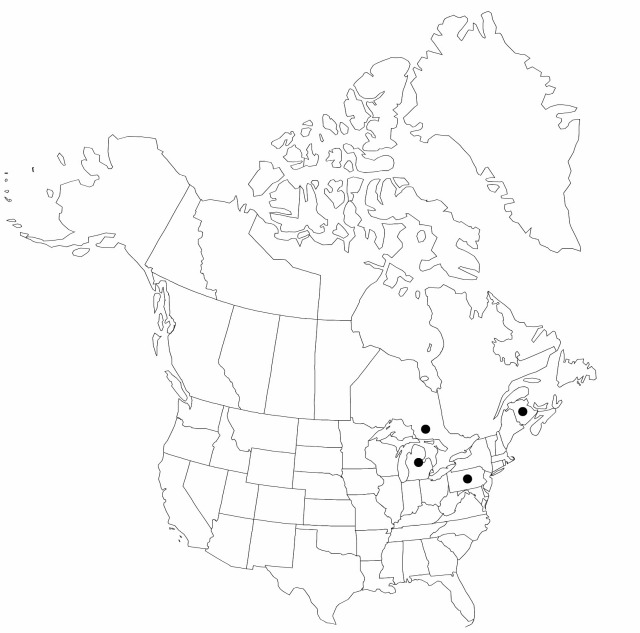Carex muricata subsp. lamprocarpa
Anal. Kvét. Ceská, 88. 1879.
Plants without conspicuous rhizomes. Culms 10–85 cm, 1.5–2.5 mm wide basally, 0.6–0.8 mm wide distally. Leaves: sheaths tight, green, fronts hyaline, with some cross-veins; ligules to 3.5 mm, usually wider than long; widest leaf-blades 2–4mm wide. Inflorescences with 4–7 spikes, 1–2.5 (–3) cm × 7–10 mm; proximal internodes 5–10 mm, as long as proximal spikes; proximal bracts to 2.5 cm; spikes with 5–10 spreading or ascending perigynia. Pistillate scales brown with green, 3-veined center, ovate, 2.1–4.5 × 1.5–2.2 mm, body as long as perigynium, apex acute or short-awned. Anthers 1–3 mm. Perigynia pale green becoming dark-brown and glossy, veinless or to 7-veined abaxially, 3–4 (–4.5) × 1.8–2.5 mm, margins serrulate distally; beak 0.5–1.5 mm, apical teeth 0.2–0.5 mm. Achenes circular to elliptic-circular, 1.9–2.4 × 1.5–2 mm.
Phenology: Fruiting late spring–early summer.
Habitat: Fields, pastures, lawns, scrub
Elevation: 10–200 m
Distribution

Introduced; N.B., Ont., Mich., Pa., Europe, w Asia
Discussion
See comments under 33. Carex divulsa.
The name Carex muricata has sometimes been misapplied to C. echinata (sect. Stellulatae).
Selected References
None.
Lower Taxa
"shortened" is not a number.
